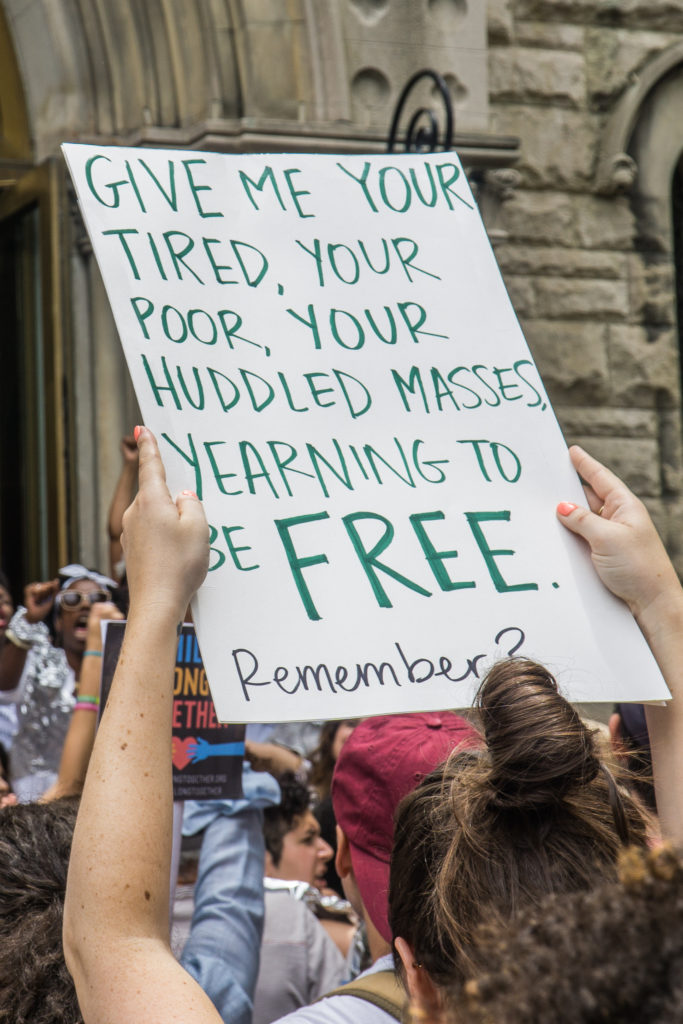
Immigration to the United States of America is, as in most Western democracies, nothing like a visit to the post office or the DMV. There is nowhere for potential immigrants to walk up and rip off a pointy slip of paper with a number on it while CNN blares into a crowded waiting room. There are no bored clerks behind dusty plexiglass, no uncomfortable wooden benches, no bowl of complimentary mints on the counter.
Yet the lie—as with so many of the immigration myths which will be explored in this short film—lives on. Every major Presidential candidate since the early ‘90s has referenced “the line” in one way or another; it continues to haunt Congressional immigration reform negotiations each year and cable talk shows from both sides of our intractable partisan divide every night.
But there is no line.
Continuing to discuss immigration into the United States in terms of a “line” does nothing to move the conversation forward. This anachronistic shorthand is, at best, factually inaccurate and, at worst, ethically irresponsible when used by anyone who should know better. The image of “the line” presumes that anyone in the world who is willing to wait it out should be able to immigrate to the United States “the right way,” where the simple truth is that upwards of 99% of the population of the Earth simply has no legal ability to do so. It provides haters with more fuel (“why can’t those line-jumpers just wait their turn?”), policymakers with a flawed and incomplete perspective, and citizens and immigrants alike with a way of thinking about immigration which has no grounding in reality.
There is no line.
Perhaps a better way to think about current U.S. immigration policy would be to imagine an unbelievably exclusive after-hours nightclub. Everyone who’s not already on the list wants an invitation, but almost no one can actually get one. And there are only a few select ways to join: be recommended by a member who happens to be a close relative or an employer, be recognized at the door as rich, famous, and/or brilliant enough in your own right to walk in, win the lottery held every so often amongst segments of the population not otherwise represented in the club, or try to wheedle the management into feeling sorry enough for you to slip you in through the back.
In Club America, Congress is the lazy absentee manager, stopping by every few years to post a new set of rules and policies and complain about how the whole thing just isn’t working anymore. United States Citizenship and Immigration Services (“USCIS”) does their best to maintain of the master list of people who have been cleared for entry (and their plus-ones), Customs and Border Patrol (“CBP”) provide the muscle at the door checking people against the list, and Immigration and Customs Enforcement (“ICE”) roams the floor looking to toss out anyone who snuck in or is acting up on the premises.
But there is no velvet rope. There is no line.
It wasn’t always this way, of course—and maybe that’s the problem. As we all know, there used to be a line. If you are an American, odds are good that at least one of your great-great-grandparents stood in it. Over 100 million of today’s Americans can trace their ancestry to an immigrant who patiently shuffled through a quick medical exam, passed a brief immigration inspection, and were otherwise able to provide favorable answers to a quick list of 29 basic questions after arrival at Ellis Island. This singular point of entry has become so synonymous with the concept of American immigration that it is perhaps more difficult than it should be to abandon the image of long lines of deserving poor in their Sunday best, gazing steadfastly into the new American dawn with a baby on one arm and luggage stuffed under the other. This was the line.
But Ellis Island has not been an active inspection station since 1924, the year that the management effectively closed our golden door to the famous “huddled masses” and announced that Club America was open for business. There has been no line for at least 95 years.
The central point of this film is not, and is not intended to be, subtle. But the power and simplicity of this message carry it through a brief but comprehensive look at not only what we talk about when we talk about immigration in America–but what we should be talking about if we want to move this conversation forward into an immigration systems which both truly honors our immigrant history and reflects our core American values.
There Is No Line is a Film Independent production. For more information on the film and how you can help see this production to completion, visit film’s production page at: https://www.filmindependent.org/programs/fiscal-sponsorship/there-is-no-line/ For more information on the film, which is currently in post-production, please contact us.

